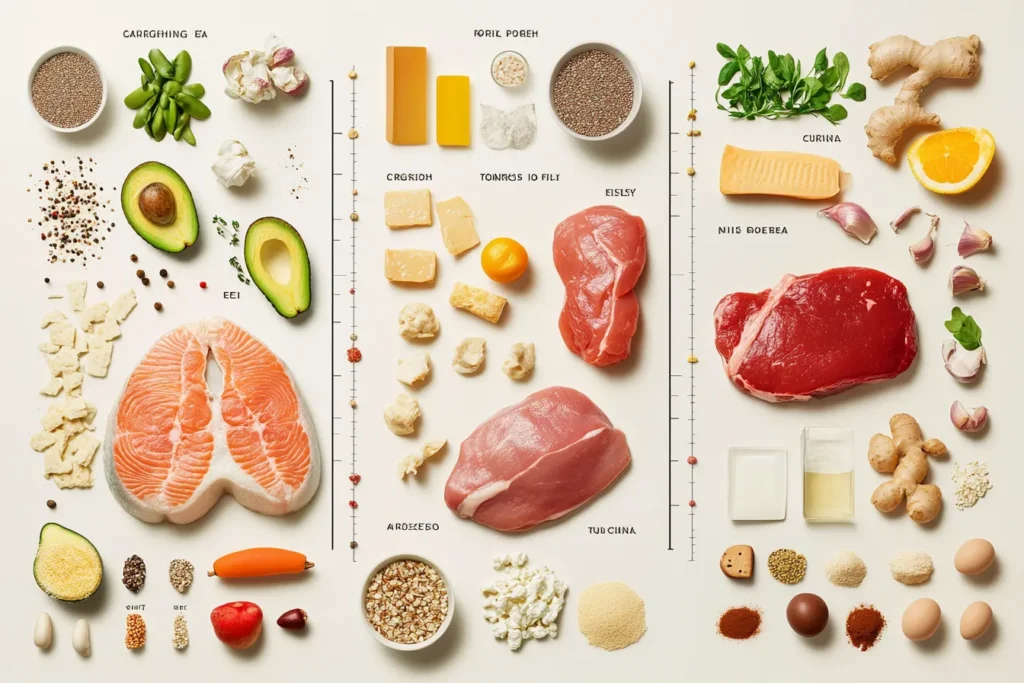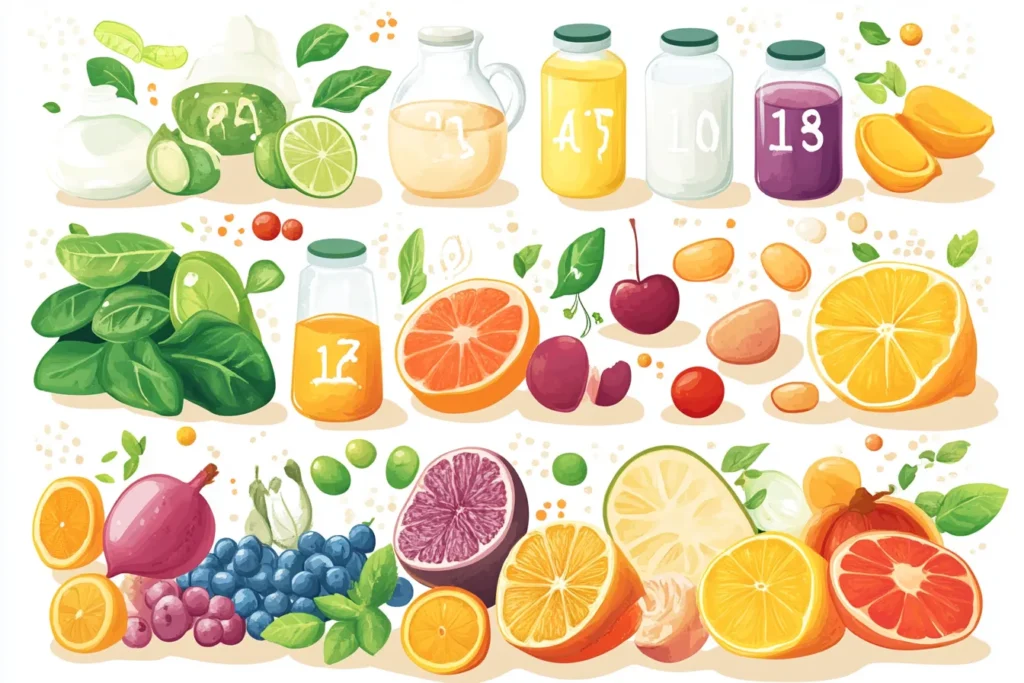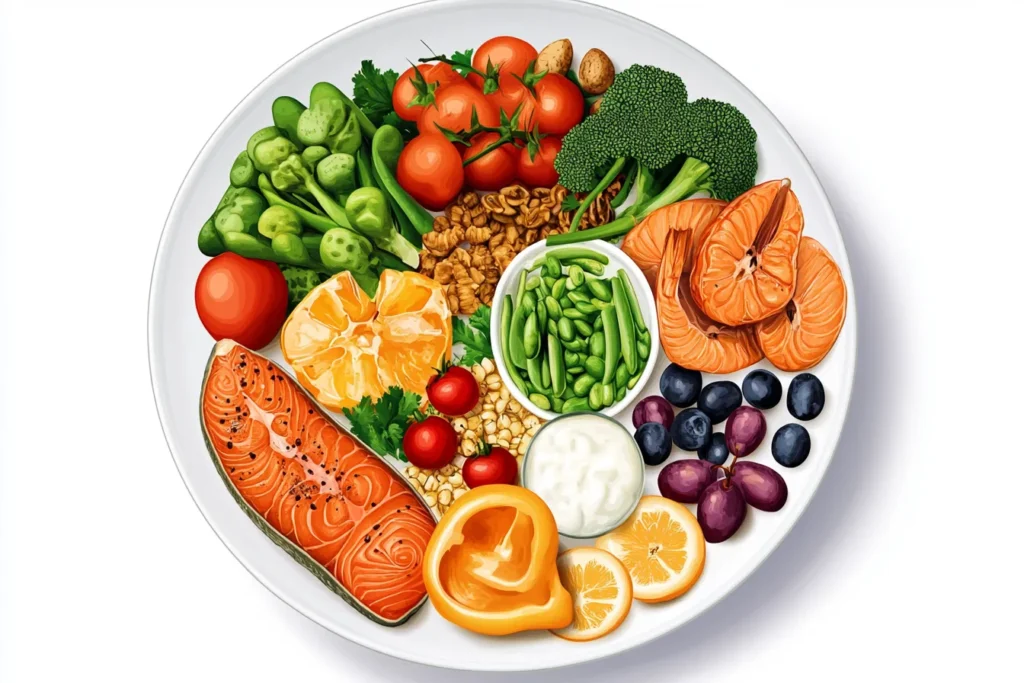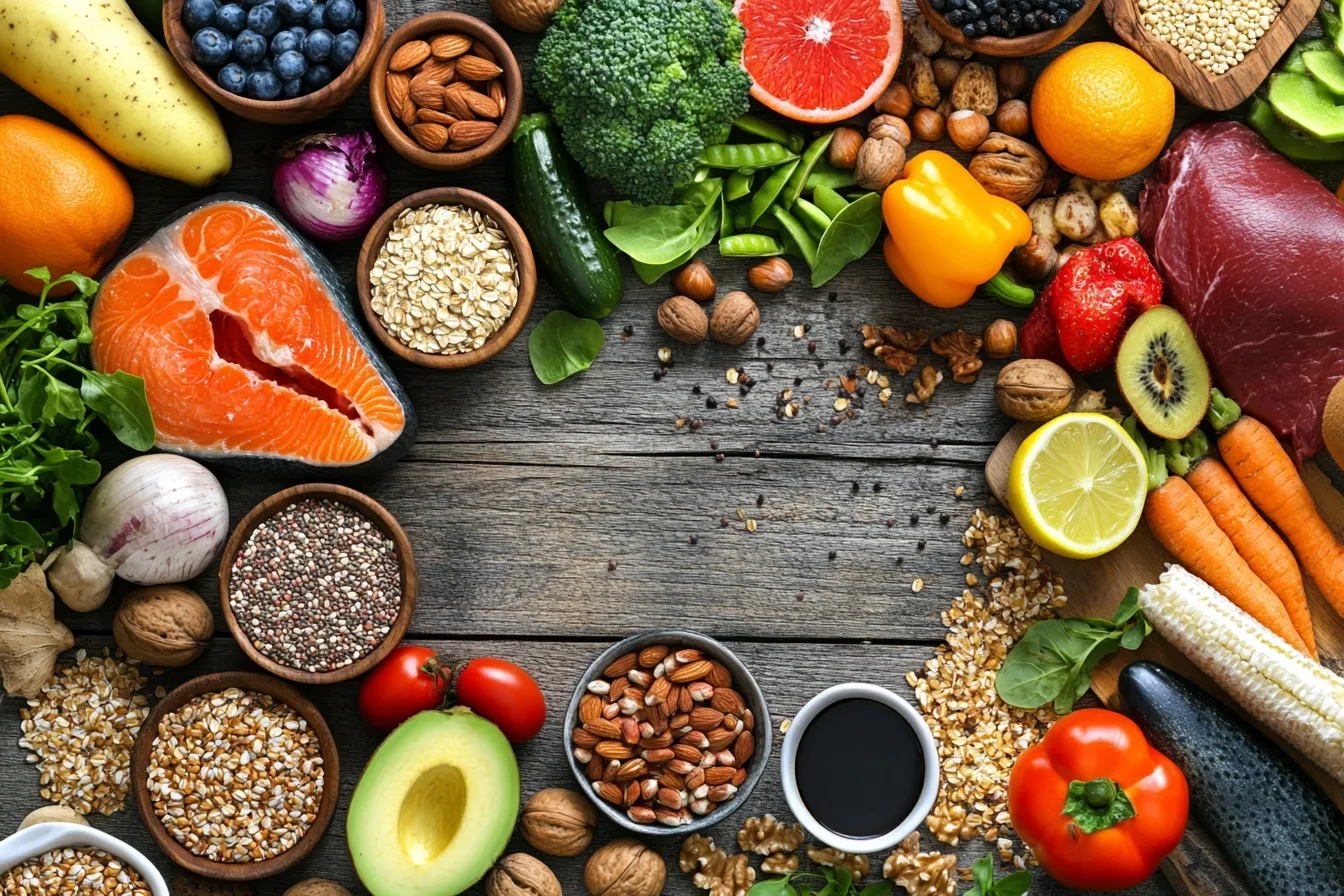Introduction to Nutrition
Nutrition is the science that explains how food affects the health and function of the body. At its core, nutrition is about how our bodies use food to support life. From fueling energy to repairing tissues and preventing disease, nutrition plays a crucial role in maintaining overall well-being.
Every bite we take contributes to our long-term health. Proper nutrition supports strong immunity, healthy growth, optimal brain function, and energy balance. Unfortunately, with the rise of processed foods and fad diets, it’s easy to lose sight of what good nutrition really means. This guide aims to bring clarity by outlining the essential nutrients, explaining how to build a balanced diet, and debunking popular myths.
In this blog, you’ll learn:
- What nutrients your body truly needs
- How to create a balanced meal plan
- The truth about popular diets and misconceptions
- How nutrition changes across life stages
Let’s start with the basics—macronutrients.

Macronutrients: Fuel for Life
Carbohydrates: The Body’s Preferred Energy Source
Carbohydrates are the primary fuel source for our brain and muscles. They’re often misunderstood, but carbs are essential for a healthy diet..Buffalo Mac And Cheese
Types of Carbohydrates
There are two main types:
- Simple carbs: Quickly digested (e.g., sugar, soda, white bread)
- Complex carbs: Provide steady energy and fiber (e.g., oats, brown rice, vegetables)
Choosing complex carbs over simple ones helps maintain stable blood sugar levels and supports digestive health.
Role in Energy
When digested, carbs are broken down into glucose, which fuels every cell in the body. Without enough carbohydrates, you may feel tired, foggy, or irritable.
Best Sources
- Whole grains (quinoa, oats, brown rice)
- Vegetables (broccoli, carrots)
- Fruits (bananas, berries)
- Legumes (beans, lentils)
Proteins: Building Blocks of the Body
Protein is vital for repairing tissues, building muscle, supporting enzymes, and producing hormones.
Amino Acids Explained
Proteins are made of 20 amino acids. Nine of them are essential, meaning they must come from your diet. Complete proteins (like meat, eggs, and soy) contain all nine.
High-Quality Sources
- Animal: chicken, fish, eggs, dairy
- Plant: tofu, lentils, quinoa, chickpeas
Consuming a variety of protein sources ensures your body gets all the amino acids it needs.
Fats: Essential for Brain and Hormone Health
Though fat often gets a bad reputation, it’s essential for absorbing fat-soluble vitamins (A, D, E, K), maintaining brain health, and producing hormones.
Types of Fat
- Saturated fat: Found in animal products and some oils (limit intake)
- Unsaturated fat: Heart-healthy, found in nuts, seeds, and avocados
- Trans fat: Artificial fat found in processed snacks (avoid)
Good Sources
- Avocados
- Nuts (almonds, walnuts)
- Fatty fish (salmon, mackerel)
- Olive oil
Eating a balanced mix of healthy fats supports long-term health and can reduce inflammation.
- Nutrition Basics – MedlinePlus — Anchor text: Nutrition Basics by MedlinePlus
- ChooseMyPlate.gov — Anchor text: Balanced Meal Planning with MyPlate
- Harvard School of Public Health – The Nutrition Source — Anchor text: Harvard’s Nutrition Research Insights

Micronutrients: Small but Mighty
While macronutrients provide the bulk of our energy, micronutrients — vitamins and minerals — are equally essential. They don’t provide calories, but they play key roles in everything from bone health to immune function and even mental health.
Vitamins: Vital for Vitality
Vitamins are organic compounds that our bodies need in small amounts. Each vitamin plays a specific role, and deficiencies can lead to serious health issues..Ina Garten Toasts
Fat-Soluble Vitamins (A, D, E, K)
These vitamins are stored in the liver and fatty tissues. They are absorbed best when consumed with fat.
- Vitamin A: Supports vision and immunity. Sources: carrots, spinach, sweet potatoes.
- Vitamin D: Helps calcium absorption for strong bones. Sources: sunlight, fortified milk, salmon.
- Vitamin E: Acts as an antioxidant. Sources: almonds, sunflower seeds, spinach.
- Vitamin K: Aids blood clotting and bone metabolism. Sources: leafy greens like kale and broccoli.
Water-Soluble Vitamins (B-Complex, C)
These vitamins are not stored in the body and must be replenished regularly through diet.
- B Vitamins (B1–B12): Help convert food into energy and support brain health. Sources: whole grains, meats, eggs, legumes.
- Vitamin C: Boosts immunity, aids in iron absorption, and acts as an antioxidant. Sources: citrus fruits, strawberries, bell peppers.
Deficiencies in B12 or Vitamin D are particularly common and can lead to fatigue, mood issues, or bone problems.
Minerals: The Body’s Chemical Messengers
Minerals help with nerve function, hydration, muscle contraction, and building strong bones and teeth.
Major Minerals
These are needed in larger amounts:
- Calcium: Essential for bones and teeth. Found in dairy, leafy greens, and fortified foods.
- Magnesium: Regulates muscle and nerve function. Sources include nuts, seeds, whole grains.
- Potassium: Balances fluids and supports heart health. Found in bananas, sweet potatoes, and beans.
Trace Minerals
Needed in smaller amounts but still critical:
- Iron: Carries oxygen in the blood. Found in red meat, lentils, spinach.
- Zinc: Supports the immune system and wound healing. Sources: seafood, beef, pumpkin seeds.
- Iodine: Important for thyroid function. Found in iodized salt and seaweed.
Balanced micronutrient intake can improve mood, energy levels, and reduce the risk of chronic illness.
Water & Hydration
Often overlooked, hydration is a cornerstone of good nutrition. Water makes up about 60% of our body and is involved in nearly every bodily function, from regulating temperature to transporting nutrients.
Why Hydration Matters
Water is essential for:
- Maintaining body temperature
- Eliminating waste via urine and sweat
- Aiding digestion and preventing constipation
- Lubricating joints
- Supporting brain function
Dehydration, even mild, can cause headaches, fatigue, poor concentration, and dry skin.
How Much Water Do You Need?
Daily water needs vary by age, climate, activity level, and diet. A general rule is:
- Men: About 3.7 liters/day
- Women: About 2.7 liters/day
This includes water from all beverages and foods. Hydrating foods like cucumbers, watermelon, and oranges also contribute.
Tips for Staying Hydrated
- Carry a reusable water bottle.
- Drink a glass of water with every meal.
- Infuse water with lemon, cucumber, or berries for flavor.
- Monitor urine color — pale yellow is ideal.

Balanced Diet & Meal Planning
Creating a balanced diet is not about strict limitations or depriving yourself of the foods you love. It’s about feeling great, improving health, and boosting energy.
Building a Balanced Plate
A healthy meal includes a variety of food groups in the right proportions.
The Key Food Groups
- Fruits and Vegetables: Fill half your plate. Rich in fiber, antioxidants, and essential vitamins.
- Whole Grains: Choose brown rice, oats, quinoa, and whole wheat over refined grains.
- Proteins: Incorporate lean meats, poultry, fish, eggs, legumes, nuts, and seeds.
- Dairy or Alternatives: Opt for low-fat or non-dairy sources like almond or soy milk.
- Healthy Fats: Add small amounts of unsaturated fats like olive oil or avocado.
Portion Control and Moderation
- Use smaller plates to avoid overeating.
- Practice mindful eating—slow down and savor your food.
- Balance indulgent foods with nutritious choices.
- Avoid skipping meals to reduce cravings and energy crashes.
Meal Prep Tips for Healthy Eating
Planning meals in advance can help you stick to your nutrition goals and save money.
Weekly Planning Strategy
- Choose a theme: Meatless Monday, Taco Tuesday, etc.
- Batch cook grains: Make rice or quinoa for the week.
- Prep proteins: Grill chicken, boil eggs, or cook tofu.
- Cut veggies in advance: Store them for quick salads or stir-fries.
- Store wisely: Use airtight containers and label meals by day.
Healthy Swaps
- Swap soda for infused water or herbal tea.
- Use Greek yogurt instead of sour cream.
- Try cauliflower rice or zucchini noodles as low-carb alternatives.
By planning meals, you gain better control over ingredients, reduce food waste, and avoid last-minute unhealthy decisions.

Nutrition Across the Lifespan
Nutritional needs change as we age. Understanding these changes helps promote health at every stage of life.
Nutrition for Children and Teens
Growing bodies and brains need a variety of nutrients:
- Calcium and Vitamin D: For bone development. Sources: dairy, fortified juices.
- Iron: Supports growth and cognitive development. Found in meats and leafy greens.
- Omega-3s: Support brain health. Found in fatty fish and flaxseeds.
Encourage variety, limit sugary snacks, and create a positive food environment.
Nutrition for Adults
Adult diets should focus on maintaining energy, preventing chronic disease, and supporting mental clarity.
- Emphasize whole foods over processed.
- Focus on heart-healthy fats and fiber-rich carbs.
- Reduce sodium to manage blood pressure.
- Avoid excess added sugars and saturated fats.
Regular meals and physical activity contribute to weight management and long-term vitality.
Nutrition for Seniors
As metabolism slows and nutrient absorption changes, seniors may need to adjust their diets.
- More calcium, vitamin D, and B12: Due to decreased absorption and risk of osteoporosis.
- Fiber: For digestive health.
- Hydration: Seniors often feel less thirsty—remind them to drink water regularly.
- Smaller, frequent meals: Easier to digest and prevent nutritional gaps.
Supplements may be necessary but should be doctor-recommended.
Special Diets & Nutrition Trends
With health and fitness trends dominating social media, special diets have become increasingly popular. While some offer genuine benefits, others may lack scientific backing or be unsustainable long-term.
Plant-Based Diets
Plant-based eating focuses on consuming more foods derived from plants and fewer from animals. It includes a spectrum of diets from vegetarian to vegan.
Health Benefits
- Lower risk of heart disease, obesity, and type 2 diabetes
- Rich in fiber, vitamins, and antioxidants
- Environmentally friendly
Nutrients to Watch
- Vitamin B12
- Iron
- Omega-3 fatty acids
- Calcium
Ensure proper planning or supplementation to meet all nutrient needs.
Keto, Paleo, and Intermittent Fasting
These diets continue to trend but are not suitable for everyone.
The Ketogenic Diet
High-fat, low-carb diet designed to shift the body into ketosis, burning fat for fuel.
- May aid short-term weight loss
- Can lower blood sugar and insulin levels
- Risks include nutrient deficiency and sustainability issues
The Paleo Diet
Focuses on foods presumed to be available during the Paleolithic era: lean meats, vegetables, fruits, nuts, and seeds.
- Eliminates grains, dairy, and processed foods
- Promotes whole food eating, but restrictive
Intermittent Fasting (IF)
Cyclic pattern of eating and fasting (e.g., 16:8 or 5:2 methods)
- May improve insulin sensitivity and promote fat loss
- Should be approached cautiously by those with blood sugar issues or eating disorders
Are These Trends Right for You?
Before adopting any diet trend:
- Consult a registered dietitian or healthcare provider
- Consider your medical history, lifestyle, and preferences
- Focus on sustainability and nutritional completeness
Common Nutrition Myths & Facts
There’s a lot of misinformation online. Let’s debunk some of the most common myths with science-based facts.
Myth 1: Carbs Make You Fat
Fact: Excess calories from any source can lead to weight gain. Whole carbs like fruits, legumes, and grains are important for energy and fiber.
Myth 2: Eating Fat Is Unhealthy
Fact: Healthy fats (like those in nuts, seeds, and fish) are essential for brain function, hormone production, and nutrient absorption.
Myth 3: Detox Diets Cleanse Your Body
Fact: Your liver and kidneys naturally detoxify your body. Extreme detox diets can be harmful and unnecessary.
Myth 4: Supplements Can Replace a Healthy Diet
Fact: Supplements can help fill nutrient gaps but shouldn’t replace real food. Whole foods provide fiber, antioxidants, and phytochemicals not found in pills.
Myth 5: Gluten-Free Means Healthier
Fact: Gluten-free foods are only necessary for people with celiac disease or gluten sensitivity. Many gluten-free processed foods are high in sugar and fat.
Myth 6: You Must Eat 6 Small Meals a Day
Fact: There’s no “one-size-fits-all.” Some people thrive on three meals a day, others on more. What matters most is total nutrient intake and consistency.
Tips for Improving Nutrition Week by Week
Building healthy eating habits doesn’t have to be overwhelming. Small, consistent changes lead to sustainable progress. Here’s a weekly strategy to gradually improve your nutrition and lifestyle.
Week 1 – Hydration Awareness
- Start your day with a glass of water
- Replace one sugary drink with water or herbal tea
- Track your daily water intake
Week 2 – Breakfast Makeover
- Swap sugary cereals for oatmeal, eggs, or smoothies
- Include a source of protein, fiber, and healthy fat
- Add fruits or vegetables for vitamins and antioxidants
Week 3 – Color Your Plate
- Aim for 3 different colored vegetables at lunch and dinner
- Try new veggies like zucchini, beets, or purple cabbage
- Incorporate leafy greens like kale or spinach daily
Week 4 – Smart Snacking
- Prepare snacks ahead: Greek yogurt, mixed nuts, sliced fruit
- Avoid processed snacks with high sugar and sodium
- Focus on protein and fiber to feel full longer
Week 5 – Whole Grains Only
- Replace white rice with quinoa, brown rice, or bulgur
- Use whole wheat bread and pasta
- Choose unrefined grains to boost fiber and nutrients
Week 6 – Mindful Eating
- Avoid distractions while eating (e.g., TV, phone)
- Chew slowly and appreciate each bite
- Stop eating when you’re 80% full
Week 7 – Cook More at Home
- Try new recipes with whole, fresh ingredients
- Involve family members in meal prep
- Use herbs and spices to reduce salt usage
Week 8 – Plan and Prep
- Create a weekly menu and grocery list
- Prepare ingredients ahead on Sundays
- Freeze leftovers for future meals
By breaking your goals into weekly actions, you’re more likely to stick with them and build long-term healthy habits.
FAQ
What is the most important aspect of nutrition?
A balanced and varied diet is key. Consuming the right amount of macronutrients (carbs, proteins, fats) and micronutrients (vitamins and minerals) ensures the body functions optimally.
How can I tell if I have a nutrient deficiency?
Common signs include fatigue, brittle nails, hair loss, mood swings, and frequent illness. Always consult a healthcare provider for blood tests and a proper diagnosis.
Is it better to eat three meals a day or six small ones?
Both approaches can be effective. What matters most is total nutrient intake and timing that suits your metabolism and lifestyle.
Are organic foods healthier?
Organic foods reduce exposure to pesticides and often have higher antioxidant levels, but nutritional differences are generally small. Washing all produce is recommended.
How does stress affect nutrition?
Chronic stress can lead to poor food choices, overeating, and digestive issues. Mindful eating and stress management techniques like yoga or journaling can help.
Can kids follow the same nutrition guidelines as adults?
Children have different needs, especially for calcium, iron, and healthy fats. While the principles of a balanced diet apply, portion sizes and specific nutrients vary by age.
Conclusion & Action Steps
Nutrition is more than just counting calories—it’s about nourishing your body, mind, and future. When you understand how nutrients work and how to balance your meals, you empower yourself to live a healthier, more energetic life.
Let’s recap what you’ve learned:
- Macronutrients (carbs, proteins, fats) are the building blocks of energy and structure.
- Micronutrients (vitamins and minerals) are essential for growth, healing, and disease prevention.
- Hydration is fundamental for every body function.
- Meal planning and balance lead to better health and fewer food cravings.
- Nutritional needs vary by age, and special diets require careful consideration.
- Common myths can mislead—always rely on scientific sources.
Whether you’re just starting your wellness journey or refining an already healthy lifestyle, small changes can make a big impact. Begin by choosing one tip from this guide today—drink more water, add color to your plate, or plan a balanced breakfast tomorrow.
Nutrition isn’t about perfection—it’s about progress. Every healthy choice adds up to a stronger, more vibrant you.

Ingredients
Equipment
Method
- Instructions
